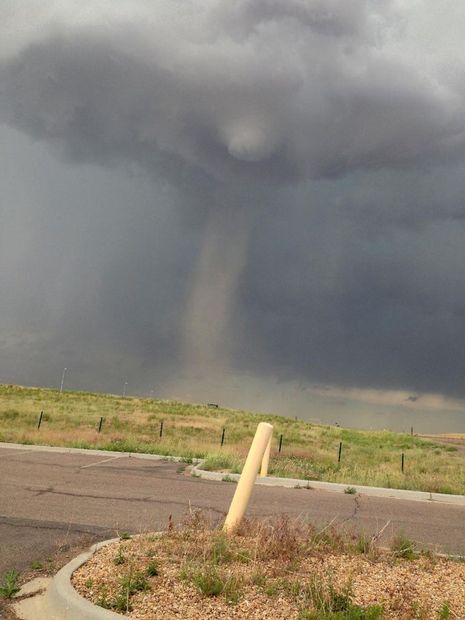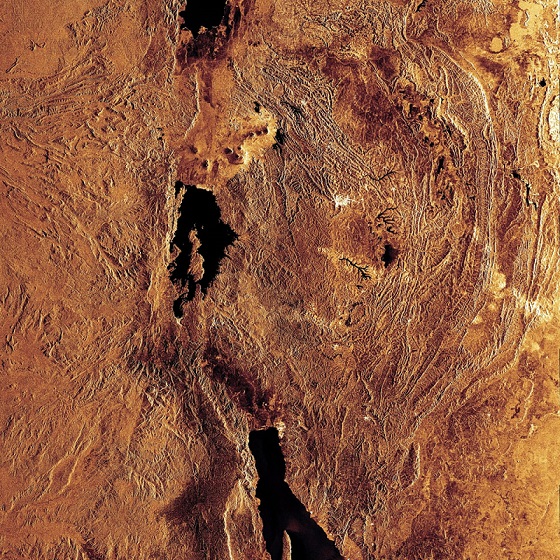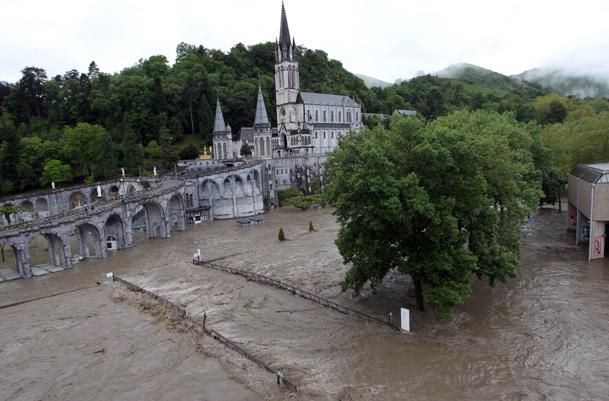
© AP Photo/Scott MorlanThis Tuesday, June 18, 2013 image provided by Scott Morlan shows a tornado that touched down near Denver International Airport.
Radar indicated a tornado briefly touched down Tuesday over the east runways of Denver International Airport, where thousands of people took shelter in bathrooms, stairwells and other safe spots until the dangerous weather passed, officials said.
Airport spokeswoman Laura Coale reported no damage. Nine flights were diverted elsewhere during a tornado warning that lasted about 40 minutes, she said.
A 97 mph wind gust was measured at the airport before communication with instruments there was briefly knocked out, said National Weather Service meteorologist Kyle Fredin.
Chris Polk, a construction foreman, was working on a renovation project just outside the airport's main concourse when he got the tornado warning at 2:15 p.m., looked up and saw a funnel cloud. He and his crew ran inside and took shelter with some 100 people, including luggage-toting passengers, inside a basement break room as tornado sirens sounded.
"It got pretty crazy around here," Polk said.
Asked whether he was nervous when he spotted the funnel cloud, he shrugged. "No, I'm from Missouri," he said.
Everyone inside the break room was calm, Polk added.




